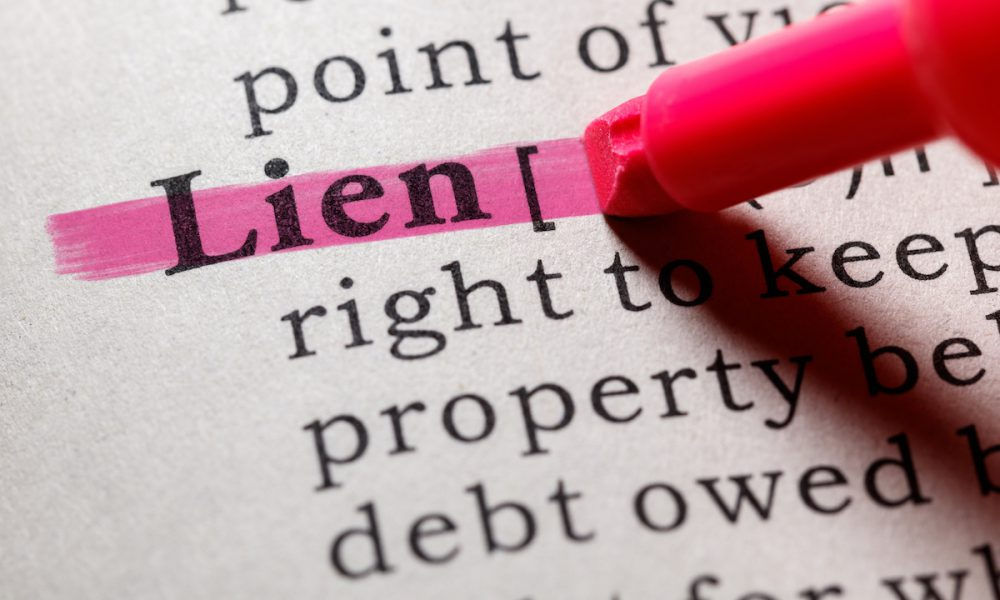Property Liens
Property Liens
Property liens, particularly those on residential homes, can be divided into two major categories: voluntary and involuntary liens.
Voluntary Lien
A voluntary lien is usually a mortgage lien. A home that was financed by a lender will have a mortgage lien until the loan is paid off in full. Since buyers agree that a lien will be placed on the property until they’ve paid off the loan, it is a voluntary lien. Voluntary liens typically don’t create issues when transferring the title to a new owner.
Involuntary Lien
Involuntary liens are unmet financial obligations such as unpaid real estate or income taxes.
Types of Involuntary liens may include:
- Mortgage Lien
Mortgage liens are levied for the debt accepted to buy a home. Mortgage liens are specific to the subject property and are voluntary. - Judgment Lien
Judgment liens can be levied by a court when someone fails to repay a debt. Judgment liens are general, and can be either voluntary (if the homeowner chooses to use their property as collateral for the debt) or involuntary (if the court orders the lien against their wishes). - Attachment Lien
An attachment lien is an involuntary lien placed against the property to prevent the owner from selling the property during an ongoing legal matter. Attachment liens can be used to prevent an owner from selling during a divorce or bankruptcy proceeding, for example. Attachment lines are involuntary and can be general or specific. - Estate Tax Lien
When estate taxes are not paid on property that is passed down after death, the government can issue a general, involuntary estate tax lien. - Federal Tax Lien
The federal government can place a general, involuntary federal tax lien against citizens who fail to pay income taxes. - Bail Bond Lien
If a homeowner needs to post bail, a bail bondsman can take a lien against the owner’s property as collateral for the debt. This specific, involuntary lien means the bail bondsman could potentially foreclose on the house if the homeowner fails to appear in court. - Municipal Utility Lien
Failure to pay municipal utilities, like water and electricity, can result in a specific, involuntary municipal utility lien against the property.

How do you find out if there is a lien on a property in NY?
Property liens are public records, so you can find them in the county clerk’s database. You may also need to visit the tax assessor’s office to find lien information for a property.
You can also contact your bank, employer, or credit reporting company to find out which Court made the judgment. You can use the Court Locator on this page to find a Court. Then contact the Court and get a copy of the court file, including the Affidavit of Service for the Summons and Complaint.
A judgment lien in New York will remain attached to the debtor’s property (even if the property changes hands) for ten years.
Removing an NYS Tax Lien requires a resolution.
- Pay in full – Pay the debt off and the liens come off.
- Payment Plan – Once paid in full, the liens will be released.
- Offer In Compromise – Debt is settled for less than you owe. …
- Tax debt expires – NYS generally has 20 years to collect on a tax debt.
Can you sell a house with a lien on it in NY?
While it is possible to sell a house with a lien attached, the ideal situation is to attempt to have it removed or satisfy the debt before listing. It is very unlikely that a buyer on the open market is going to want to take over a house with a lien on it.
Civil Judgments vs. Judgment Liens: What’s the Difference?
There is a difference between judgments and judgment liens. They are two separate animals, and it’s important to know the difference if you’re trying to determine which to search for when doing your due diligence.
The easy definition is that a judgment is an official decision rendered by the court with regard to a civil matter. A judgment lien, sometimes referred to as an “abstract of judgment,” is an involuntary lien that is filed to give constructive notice and is to attach to the Judgment Debtor’s property and/or assets.
